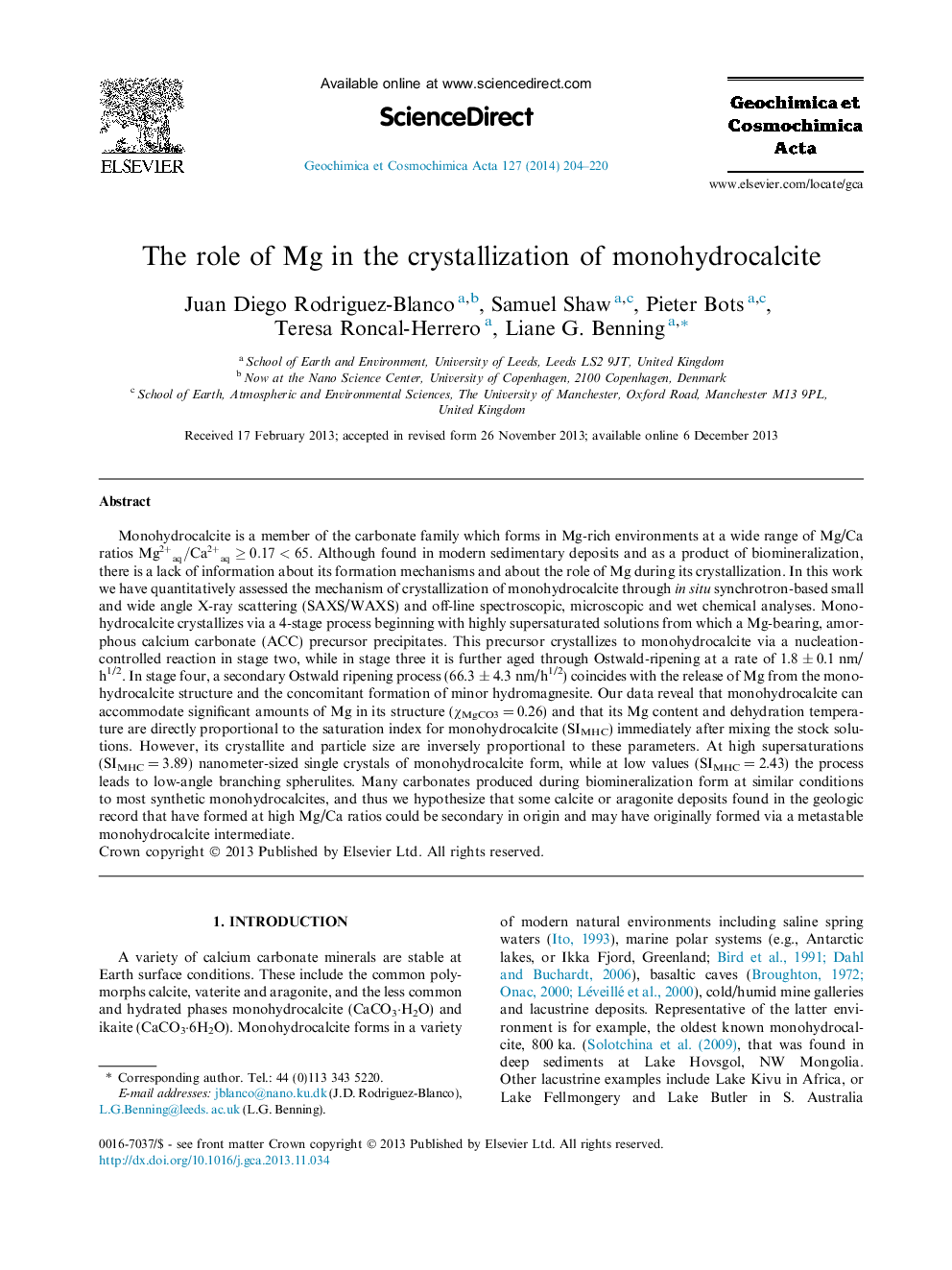| کد مقاله | کد نشریه | سال انتشار | مقاله انگلیسی | نسخه تمام متن |
|---|---|---|---|---|
| 4702144 | 1638030 | 2014 | 17 صفحه PDF | دانلود رایگان |

Monohydrocalcite is a member of the carbonate family which forms in Mg-rich environments at a wide range of Mg/Ca ratios Mg2+aq/Ca2+aq≥0.17<65. Although found in modern sedimentary deposits and as a product of biomineralization, there is a lack of information about its formation mechanisms and about the role of Mg during its crystallization. In this work we have quantitatively assessed the mechanism of crystallization of monohydrocalcite through in situ synchrotron-based small and wide angle X-ray scattering (SAXS/WAXS) and off-line spectroscopic, microscopic and wet chemical analyses. Monohydrocalcite crystallizes via a 4-stage process beginning with highly supersaturated solutions from which a Mg-bearing, amorphous calcium carbonate (ACC) precursor precipitates. This precursor crystallizes to monohydrocalcite via a nucleation-controlled reaction in stage two, while in stage three it is further aged through Ostwald-ripening at a rate of 1.8 ± 0.1 nm/h1/2. In stage four, a secondary Ostwald ripening process (66.3 ± 4.3 nm/h1/2) coincides with the release of Mg from the monohydrocalcite structure and the concomitant formation of minor hydromagnesite. Our data reveal that monohydrocalcite can accommodate significant amounts of Mg in its structure (χMgCO3 = 0.26) and that its Mg content and dehydration temperature are directly proportional to the saturation index for monohydrocalcite (SIMHC) immediately after mixing the stock solutions. However, its crystallite and particle size are inversely proportional to these parameters. At high supersaturations (SIMHC = 3.89) nanometer-sized single crystals of monohydrocalcite form, while at low values (SIMHC = 2.43) the process leads to low-angle branching spherulites. Many carbonates produced during biomineralization form at similar conditions to most synthetic monohydrocalcites, and thus we hypothesize that some calcite or aragonite deposits found in the geologic record that have formed at high Mg/Ca ratios could be secondary in origin and may have originally formed via a metastable monohydrocalcite intermediate.
Journal: Geochimica et Cosmochimica Acta - Volume 127, 15 February 2014, Pages 204–220